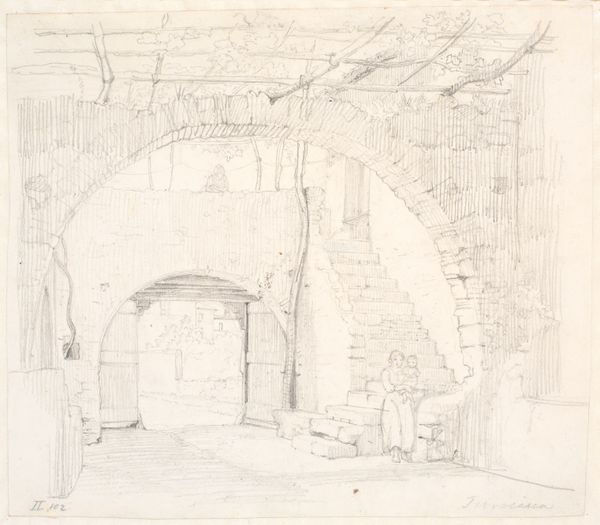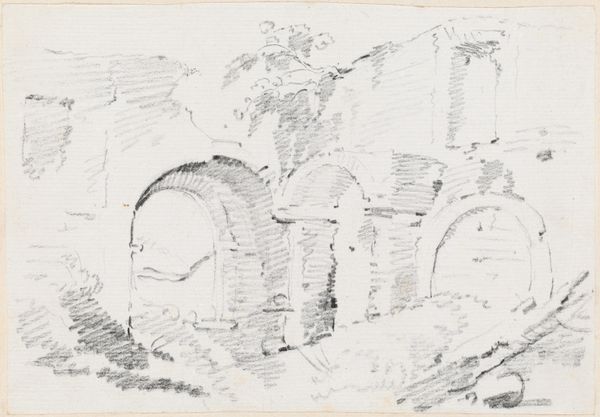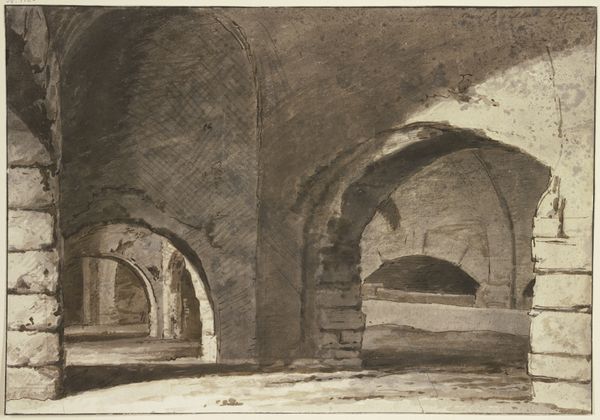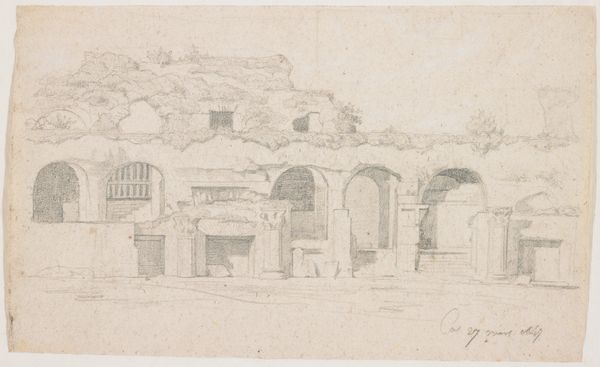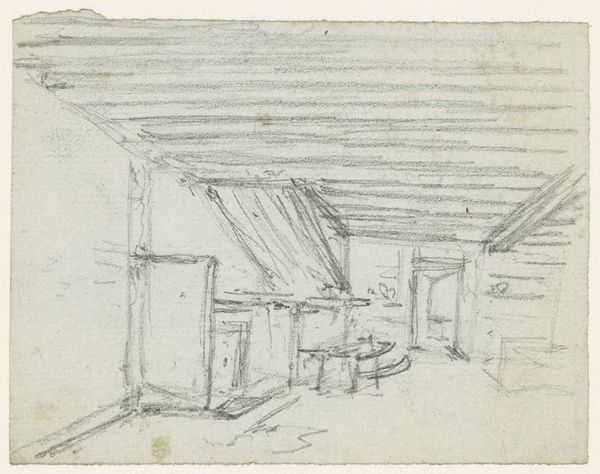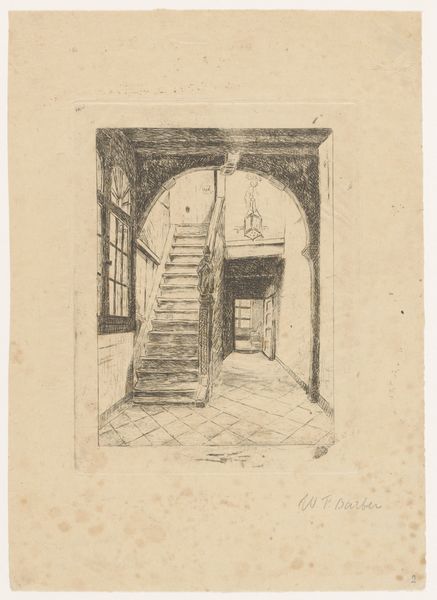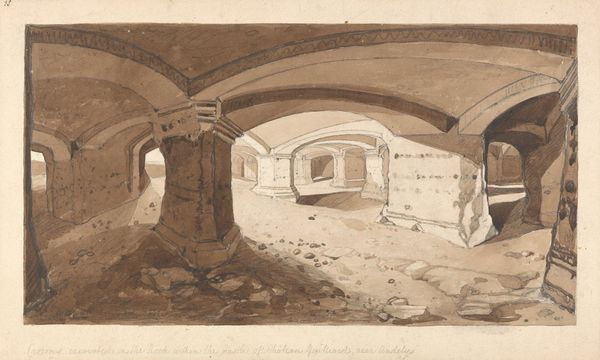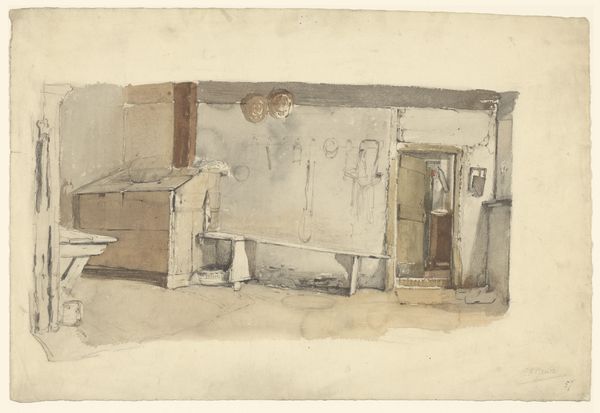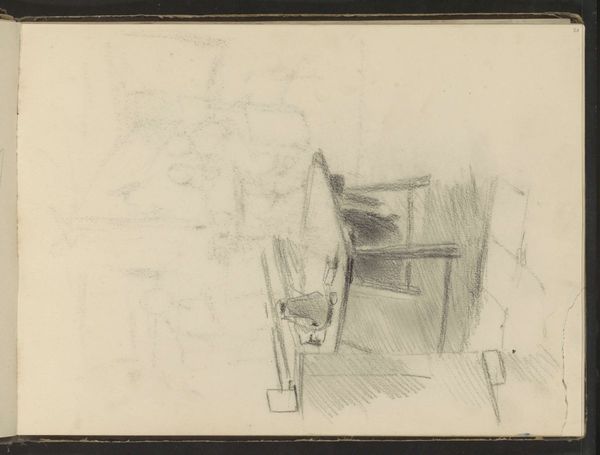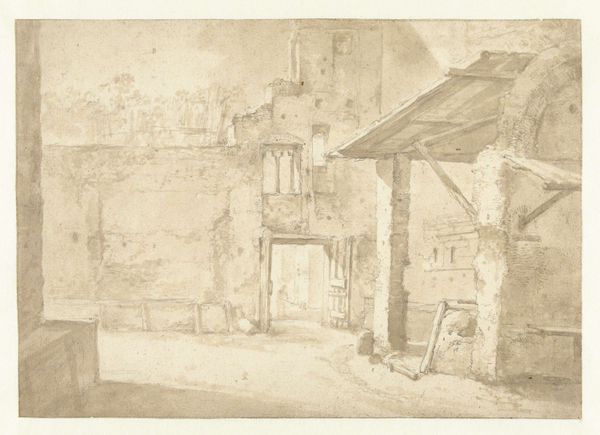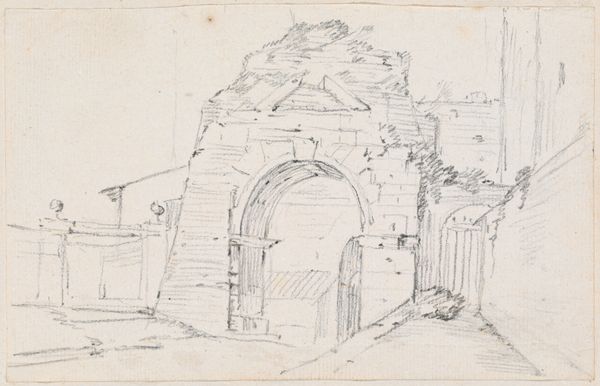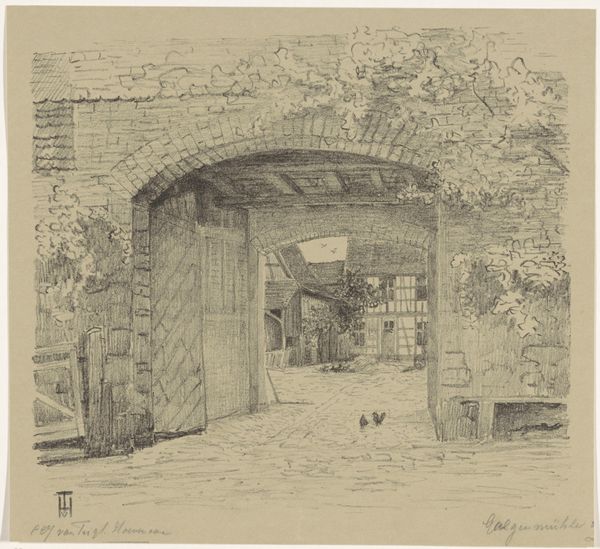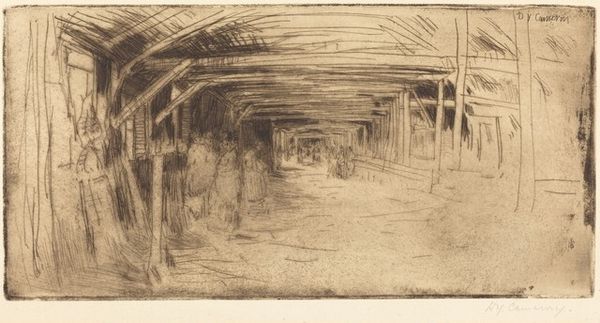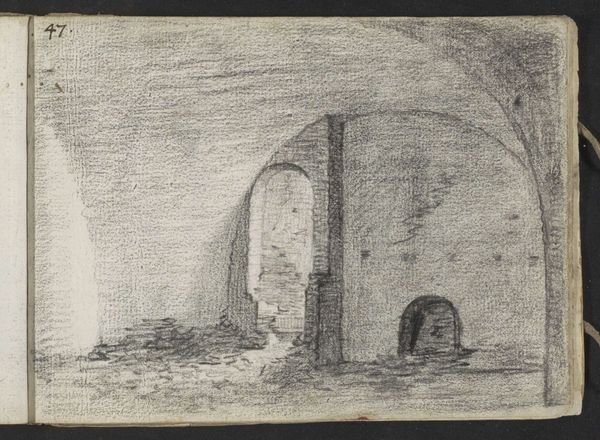
drawing, paper, pencil, architecture
#
drawing
#
16_19th-century
#
landscape
#
paper
#
pencil drawing
#
geometric
#
pencil
#
line
#
architecture
#
realism
Copyright: Public Domain
Curator: Before us, we have Rudolf Hirth du Frênes’ "Interieur aus Sterzing, Tirol," a pencil drawing currently held in the Städel Museum collection. Editor: It has an austere quality, wouldn't you say? The tonality is quite muted, but I immediately notice the strong linear perspective leading into the depths of that arched corridor. Curator: Precisely. Note the artist's adept manipulation of line and shadow to define the architectural space. The lines converge, creating a powerful sense of depth, almost a vanishing point leading us toward some unknown, distant space. Editor: Speaking of space, I’m also drawn to the interior. The geometric design of the interior—a dark cart positioned next to a whitewashed column and archways receding—certainly speaks of labor. Also, look at the object dangling in the first archway, what do you think that represents? Curator: A lamp? What the artist includes, as much as what he leaves out, contributes to the image's semiotic texture, doesn’t it? Look how the stark geometry, defined through carefully hatched lines, contrasts with the subtle variations in tone. It suggests a tension, or perhaps, a commentary on form. Editor: Do you think there might be a psychological aspect as well? This could reference earlier images or shared ideas about interiors. This visual arrangement seems less random, it is likely referencing older images that resonate with psychological meaning. Curator: An interesting interpretation, for sure. Ultimately, the artist presents us with a carefully constructed visual experience. The formal elements—the lines, tones, and composition—coalesce into a striking depiction of spatial depth. Editor: Agreed. I now look at the work differently seeing that space and the dangling lamp are the artist's key means to convey some emotion beyond geometry. Curator: Indeed. It invites contemplation, even demands it through such a rigorous composition, no? Editor: A well said summary, by closely analyzing the artist’s stylistic intentions we now see how geometry relates to depth and creates emotions in the viewer.
Comments
No comments
Be the first to comment and join the conversation on the ultimate creative platform.
